Everything we experience is based on vibration.
Everything is energy Vibrating at a certain frequency!
It is Just as Nikola Tesla said,
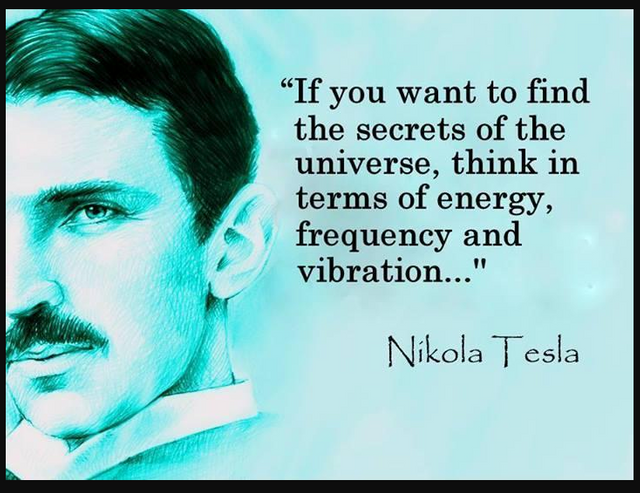
What is Vibration?
In Physics vibration refers to rhythmic oscillation of particles or wave like energies.
At the atomic and subatomic levels of nature
Quarks are constantly in flux
popping in and out of the Quantum Vacuum
like a boiling sea!
This means the nuclei of atoms are vibrating very rapidly.
The electrons that surround the nuclei cannot be found in one place
Frequencies determine whether something is solid, liquid or gas.
Longer wavelengths are things that are physical
Shorter are like a thought
Short wavelengths can pass through longer wavelengths
Interesting theories
Formulation of Atomic Theory
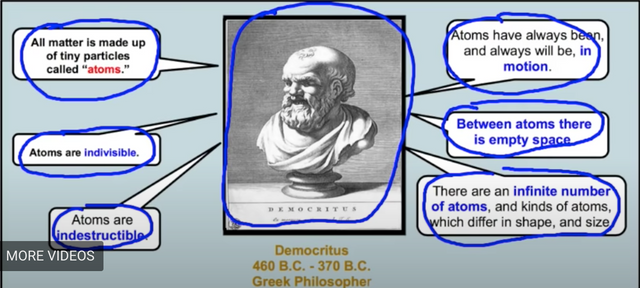
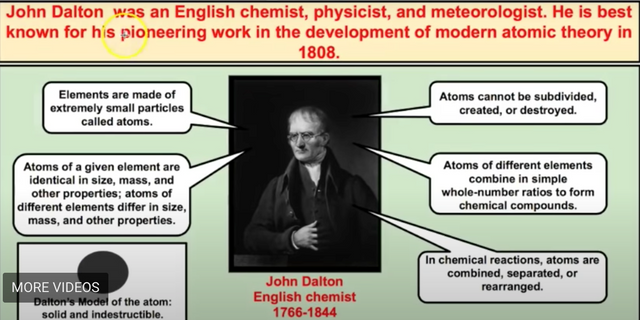
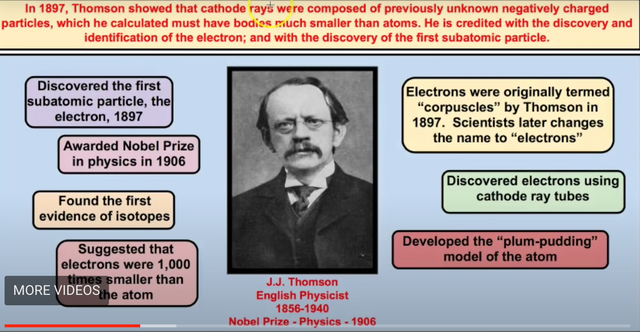
Isotopes are two or more types of atoms that have the same atomic number and position in the periodic table, and that differ in nucleon numbers due to different numbers of neutrons in their nuclei. While all isotopes of a given element have almost the same chemical properties, they have different atomic masses and physical properties.
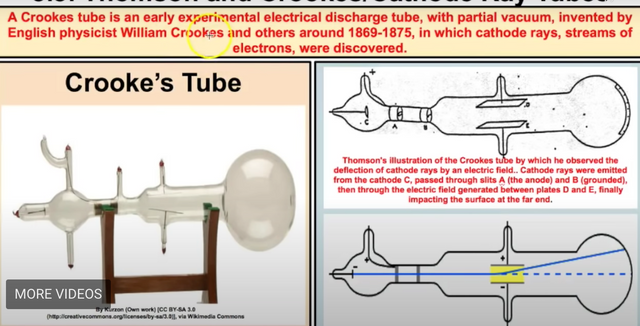
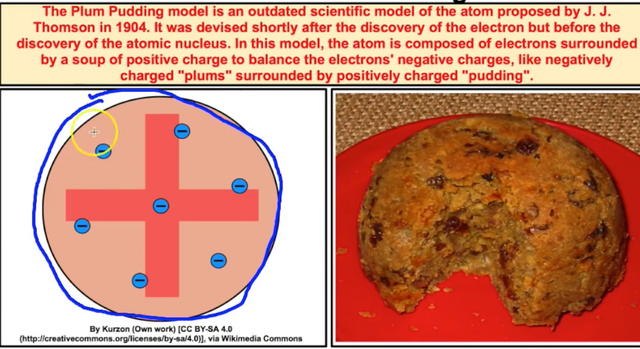
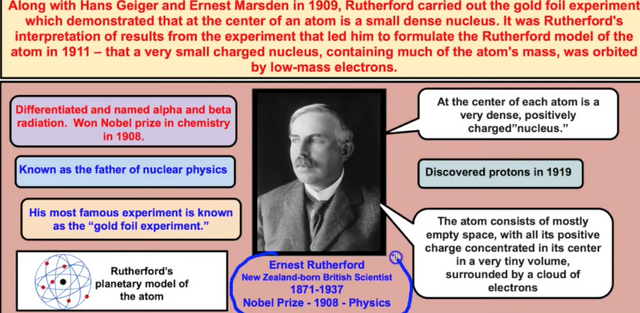
Led to discovery of Nucleus of atoms
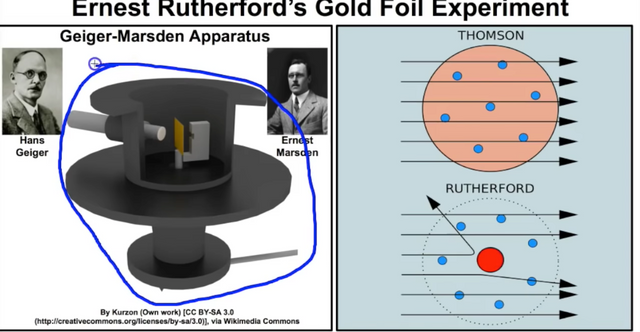
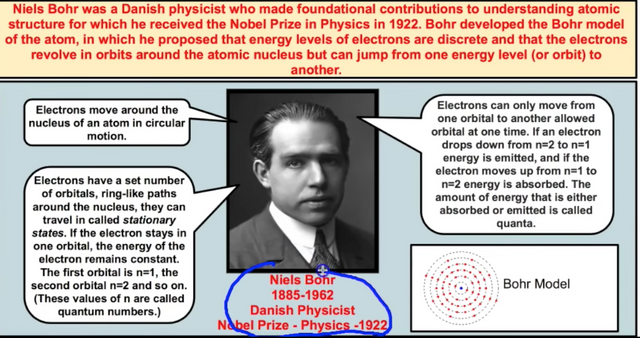
Bohr model of the atom
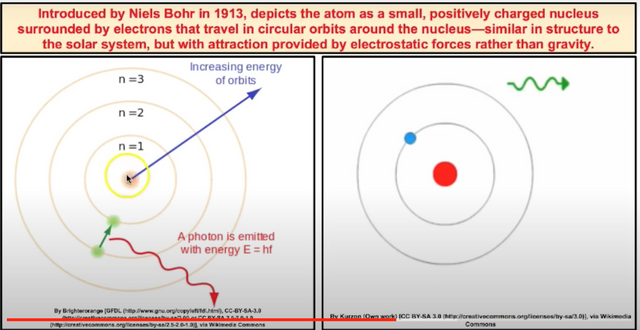
Quantum Theory Wave properties of matter
Electrons have wavelike properties just like protons
All matter exhibits wave like properties
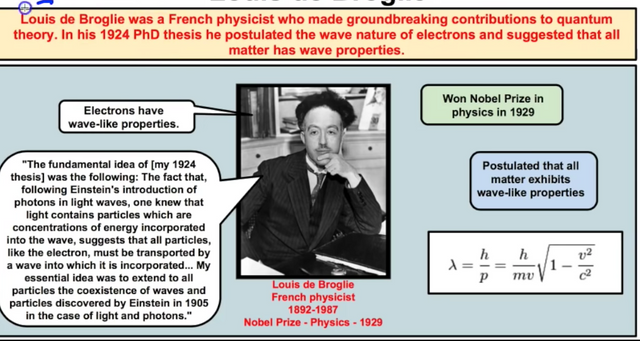
Current understanding of the Atom and Atomic theory
You cannot pinpoint the exact location of an electron outside of the nucleus of an atom, but you can only come up with a Probability of Where it Might be!
The cat is both alive and dead. . .the In between much? Cue Twilight Zone music.
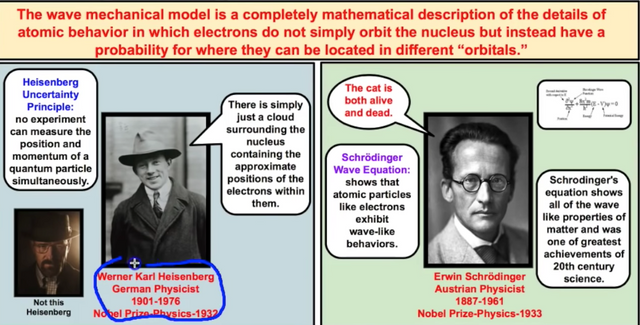
Wave Mechanical Model of the atom current understanding
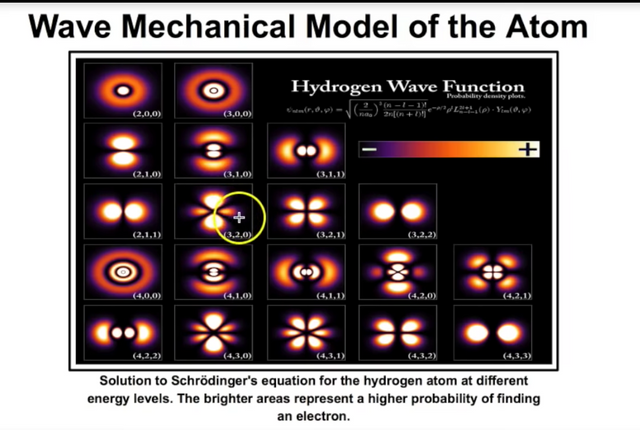
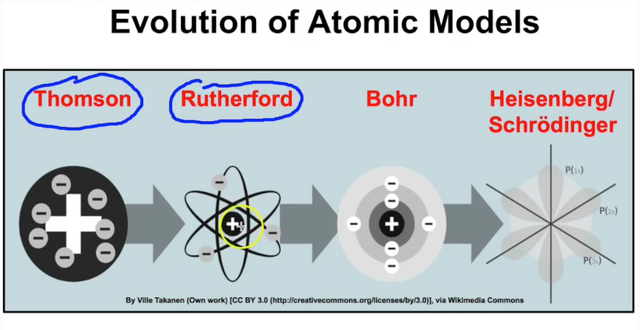
Most do not cover him, but he was Very Influential,
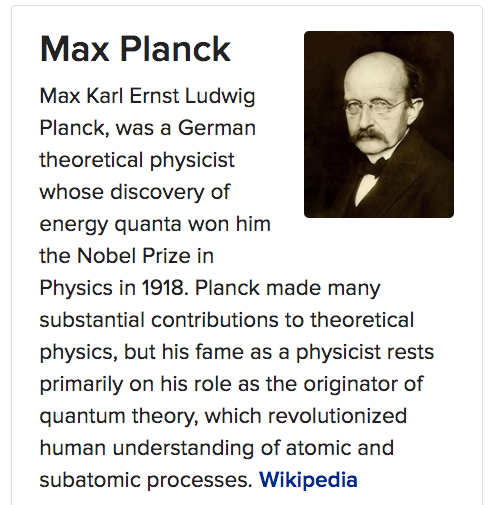
How electrons Really react
A cloud of Wavelike energy that orbits the nucleus
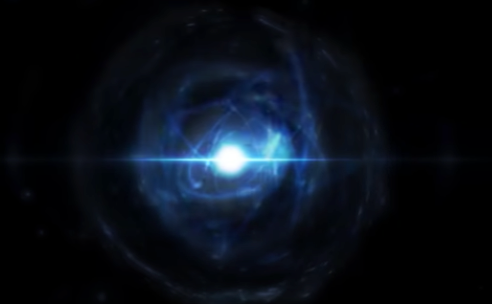
Electrons are Never at rest
This constant vibration
Constant Vibration is the basis of all
matter even if that matter appears to be
stationary from our perspective this
principle of vibration was well
understood by hermetic initiates of old
they said nothing rests everything moves
everything vibrates vibration is about
movement but again it is a rhythmic
movement so the principle of rhythm also
applies here.
In physics the rate of
vibration meaning how fast or slow
something is oscillating is called
frequency.
Frequency is a rhythm
it is measured as beats or cycles per
unit of time.
Rhythm is about the pendulum swing to
the left and to the right the ebb and
the flow in and out high and low in
equal proportion
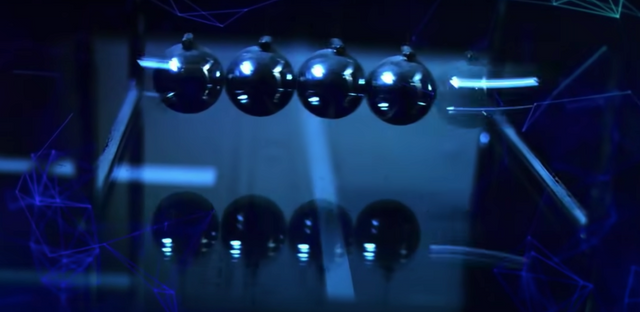
This principle says
that rhythm compensates and it manifests
itself in everything.
And that rhythm
moves between two poles back and forth.
So the principle of polarity also
applies.
Polarity is about how things
that seem opposite are actually two
poles of the same thing
They're just
vibrating at different degrees on one
spectrum.
Example. . .heat and cold!
These are just varying degrees of
temperature which is based on vibration
rates of molecules.
Whether we feel
something as hot or cold depends on
where our body temperature is on that
scale things that are higher temperature
than us will feel hot while lower
temperatures will feel cold.
So the same is
true for light and darkness noise and
silence positive and negative spirit and
matter and so on .
None of these are
absolutes rather they are degrees on the
spectra of polarity.
Refresher for those who want one.
Molecular Polarity Simplified
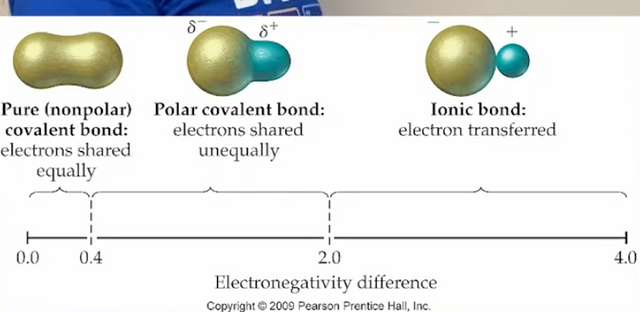
The important
thing to remember is that our
perceptions of various vibrational
phenomena are all relative to our own
vibration.
Vibration is what creates the
differences in all that we perceive and
experience in life.
Everything from the
material we touch to the sounds we hear
the flavors we taste and all the myriad
energies we experience are different
primarily because they have different
vibrations.
When we realized that everything in life
is about vibration we'll also see how
even our thoughts have vibrational
energy and can affect things as much as
other aspects of life.
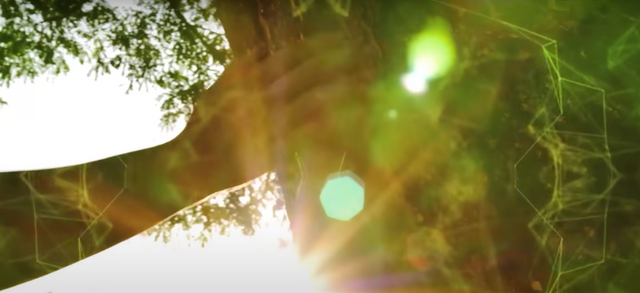

These three
principles of vibration, rhythm and
polarity all work together in a
synergistic way and the cool thing is
that we can harness and master these
principles in our own lives by viewing
life as energy, frequency and vibration.
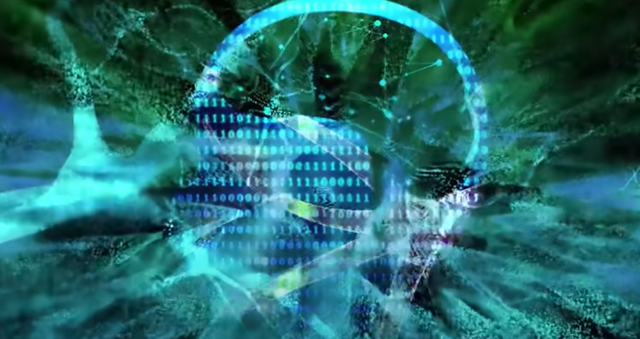
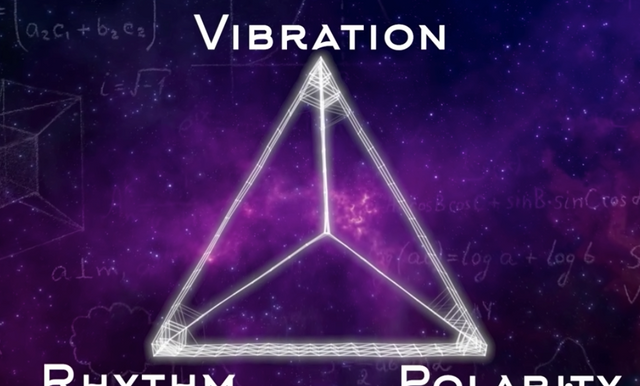
As we shift
our vibrations and rhythms on the
spectra of polarity we can also alter
our experience of energy space-time and
momentum.
What IF. . .
energy, space-time and
momentum are emergent properties of our
universe rather than fundamental
building blocks.
They emerge as a result
of the hologram being projected into
this dimension from somewhere beyond.
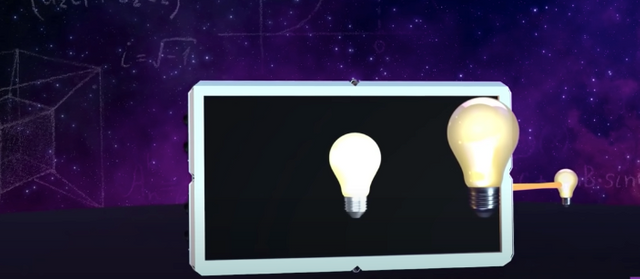
What is now
thought to be the most fundamental
building block of our universe is
information.
Meaning the encoded
information that generates the hologram
but what is information and where does
it come from is it just quantum bits of
binary code like what's depicted in the
movie The Matrix.


Or is it the
interference patterns from some
intersecting waves of light as we see in
the encoding of our hologram playing
cards or could it be the vibrational
notes being played on supersymmetric
strings and membranes.



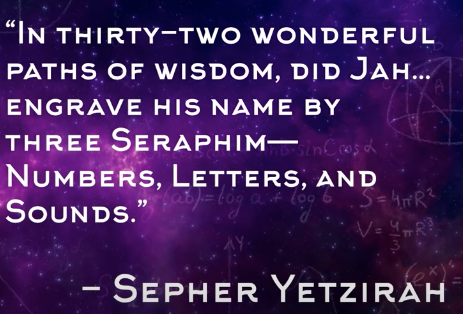

Are Numbers, Letters and Sounds the building blocks used to encode the holograph for creation?
God did said in His word. . .
Number One
He IS the WORD.
John 1:1
1 In the beginning was the Word, and the Word was with God, and the Word was God.
Number 2 God has a book even in the one accepted by all "Christian" churches as the canon. . .Numbers.
Is God a God of Numbers?
Did He Not Speak Creation into existence?
Where did the Garden of Eden really go?
Is it after all Just another dimension.
Why are there different levels of heaven?
How is that done Unless there are other Dimensions involved?
For example,
2 Corinthians 12:2
King James Version
2 I knew a man in Christ above fourteen years ago, (whether in the body, I cannot tell; or whether out of the body, I cannot tell: God knoweth;) such an one caught up to the third heaven.
Pure quantum frequencies or
alternatively as the rays of creation
from God's Source Code which we could also relate
to. . . super strings.
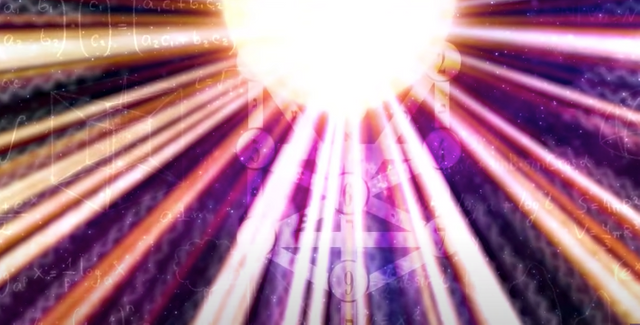
Then the letters are
more like combinations or patterns
formed as different numbers interact.
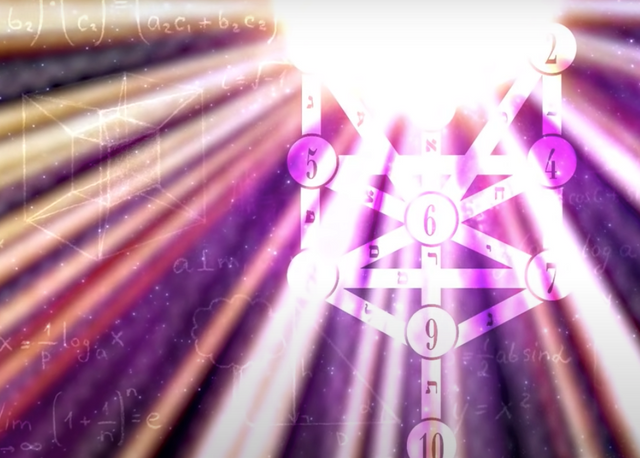
These form a more modulated or rhythmic
combination of frequencies which become
the interference patterns that inform
the holographic encoding.
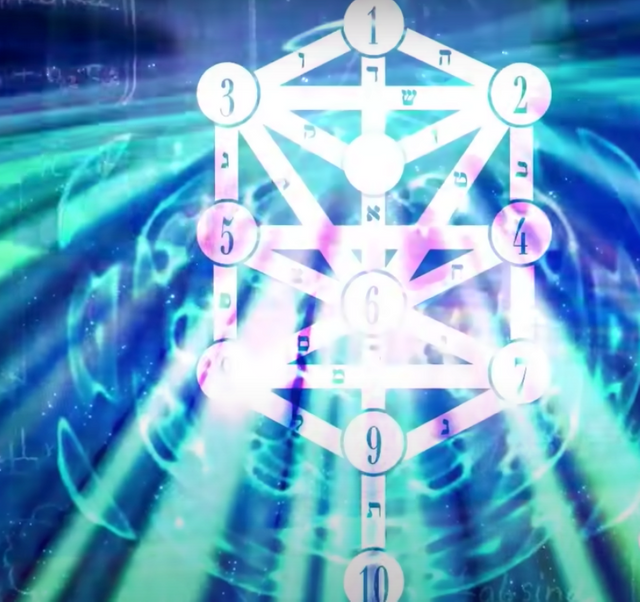
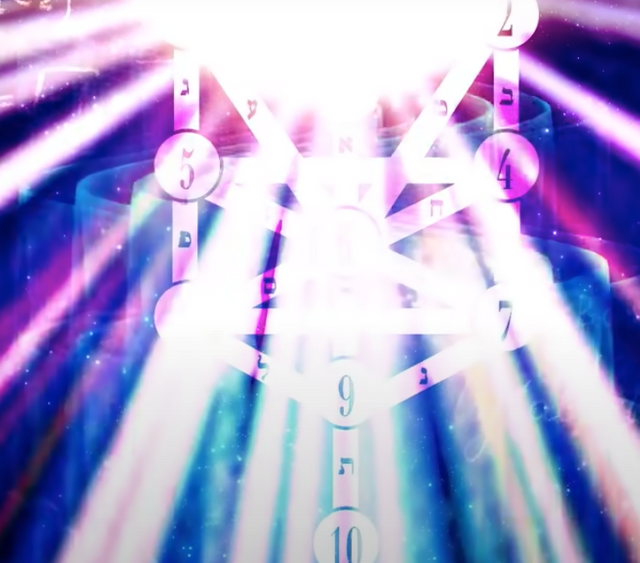
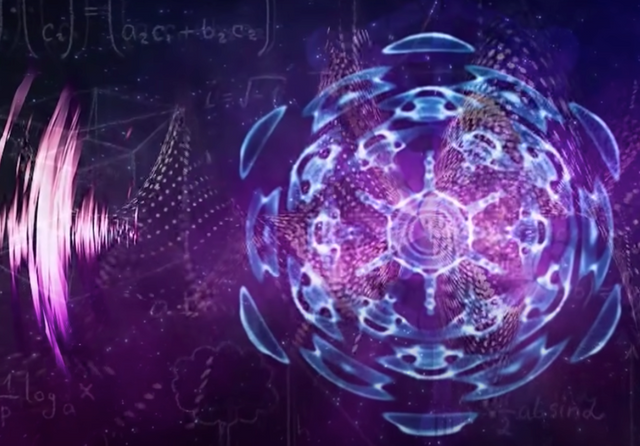
Finally sounds
are the outward expression of the
letters or vibrational patterns.
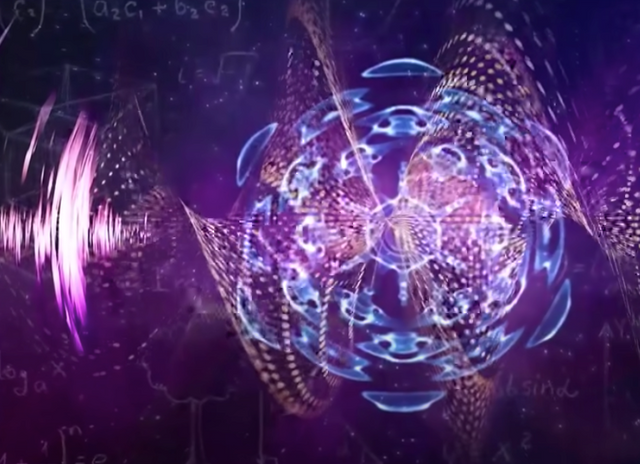
Sound is
what shapes matter in the hologram
Could the sounds be the
vibrational energy from God's source code that
shines through the holographic encoding to project it into the universe.
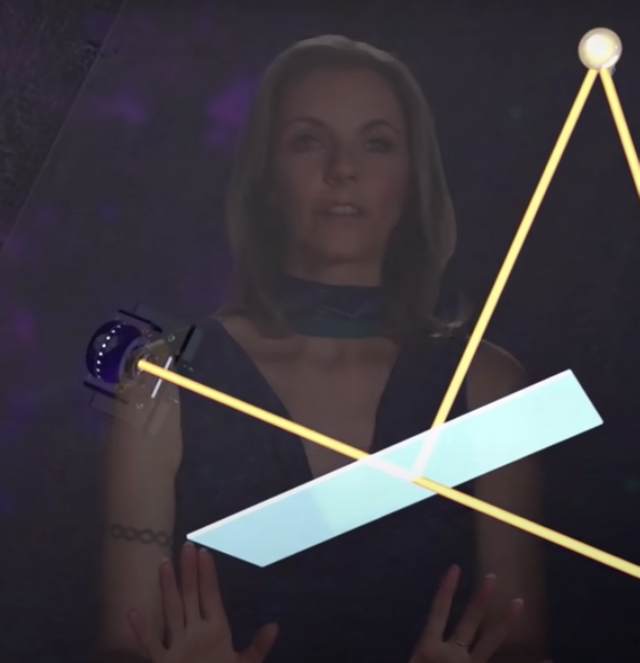
This
brings us again back to the principle of
vibration.
Only now we see that this
applies in the quantum realm and beyond
into the spiritual realm.
Remember, I told you our God is a powerful creator on a Quantum level.
When has God Ever done Anything on a small scale?
Let's see. . .
Parting of the Red Sea. . .large Scale? CHECK
Walls of Jericho. . .large scale? CHECK
Culmination of Esther bringing Haman down. . .large Scale? CHECK
Writing on the Wall while the secular Babylonians mocked the side of good and were having a Wild Party?
Daniel 5:25-28
King James Version
25 And this is the writing that was written, Mene, Mene, Tekel, Upharsin.
26 This is the interpretation of the thing: Mene; God hath numbered thy kingdom, and finished it.
27 Tekel; Thou art weighed in the balances, and art found wanting.
28 Peres; Thy kingdom is divided, and given to the Medes and Persians.
Large SCALE? CHECK
Whose Ready for a Handwriting on the Wall Moment?
They are so Many more instances.
Yes. ..I know about Michael W. Smith, I guess like God I'm willing to give people a Second Chance!
Our God is an Awesome God with Lyrics
Worth checking out for the Powerful verses throughout his Word and He IS the Word!
Awesome God [ 1 hour loop ]
Excellent vid here,
Gives you the chords
Go play it on the piano, guitar, violin or whatever instrument you play!
Chris Tomlin - Indescribable (Lyrics And Chords)
Beautiful scenery Vid
Indescribable video lyrics - Chris Tomlin
Now Back that up with this and God's Quantum Physics
Is there EVER a reason to FEAR?
Also has the chords. ..go Play and Sing!
Chris Tomlin - Whom Shall I Fear [God Of Angel Armies] (Lyric Video)
Vibration is
not just a physical phenomenon vibration.
Originates with the source code of God at the
spiritual levels when the Rays or
numbers are sent out.
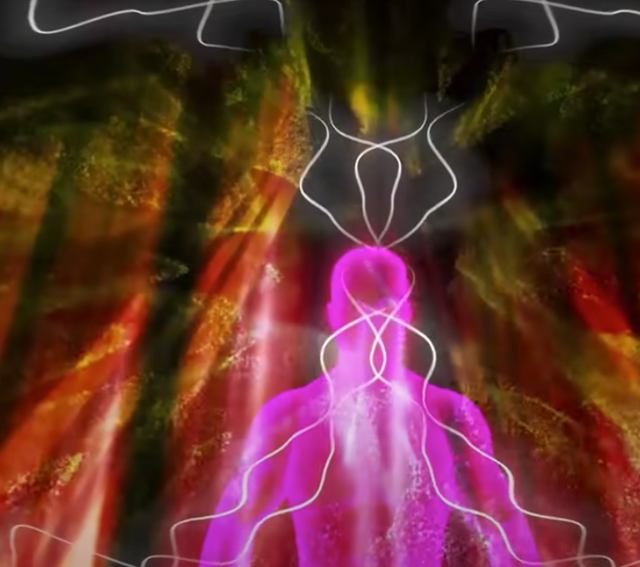

Now how can we
apply this?
First of all it tells us that
numbers are the first building block.
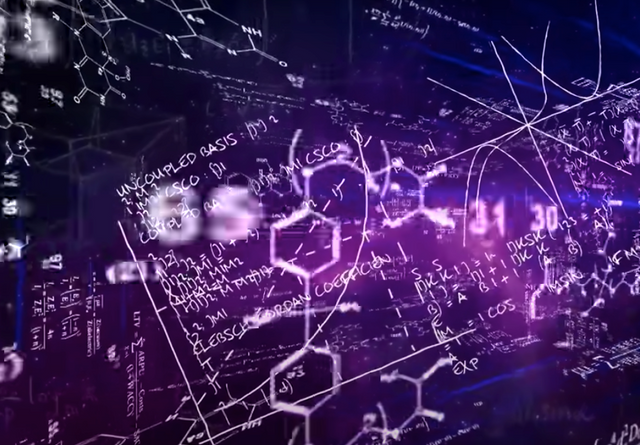
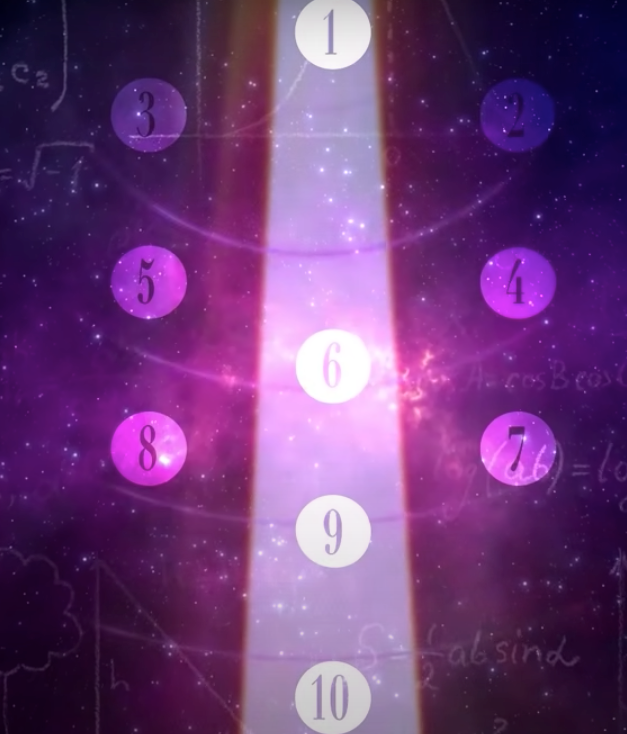
Physicists would relate numbers to
mathematics
Mehta physicists however relate numbers
to numerology in other words numbers are
not so much for counting rather they
have meaning they are bridges or links
to the rays of creation.
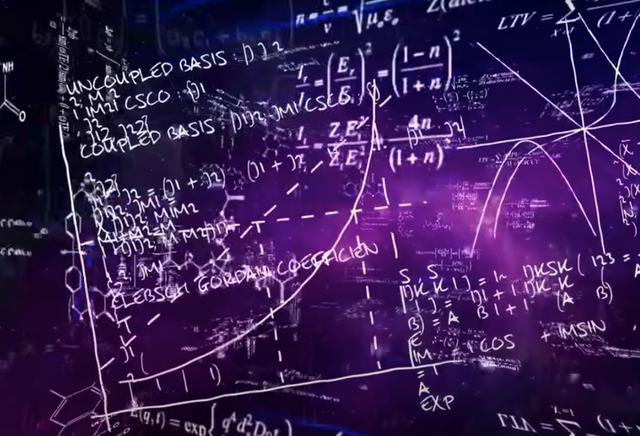
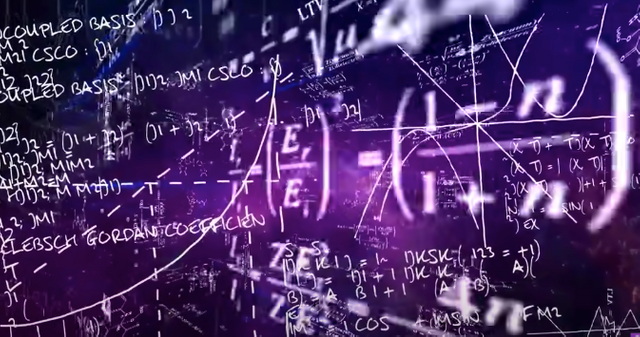

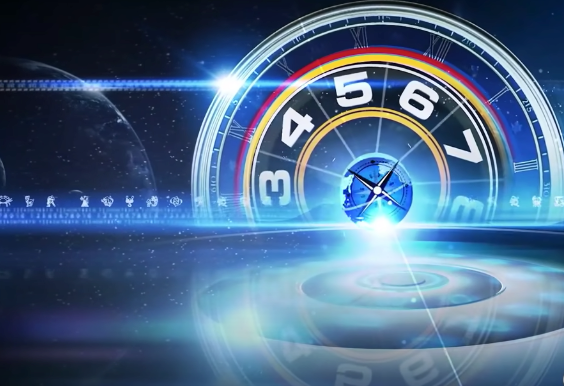
The numbers are assigned meaning.
Number one being at the top
closest to the source code.
The numbers 9
and 10 are at the bottom closest to the
physical.
So vibrationally speaking
number 1 is the highest vibration while
10 is the lowest.
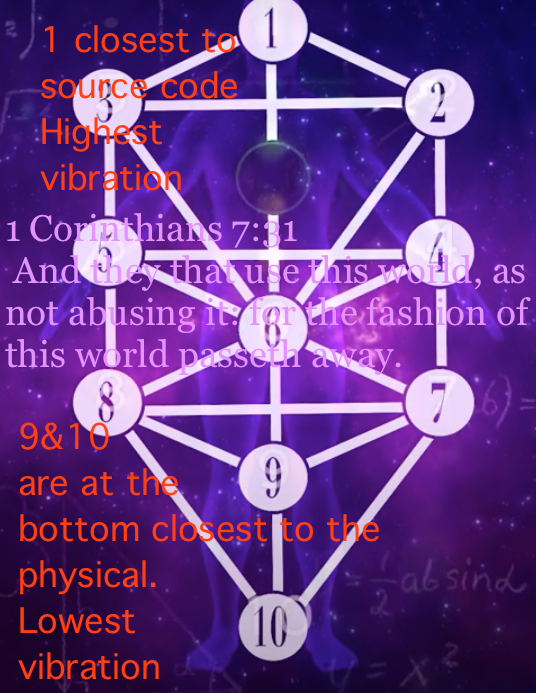
Think of it like tuning the dial.
when we want to raise vibration then we
move the dial up the scale when we want
to lower vibration we bring it back down.
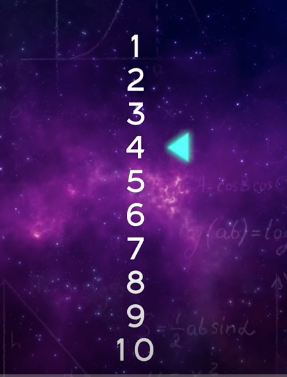
Energy in physics
Energy typically
refers to the capacity to do work, but at
the quantum level energy is directly
proportional to the frequency of a
particle or wave such as a photon of
light.
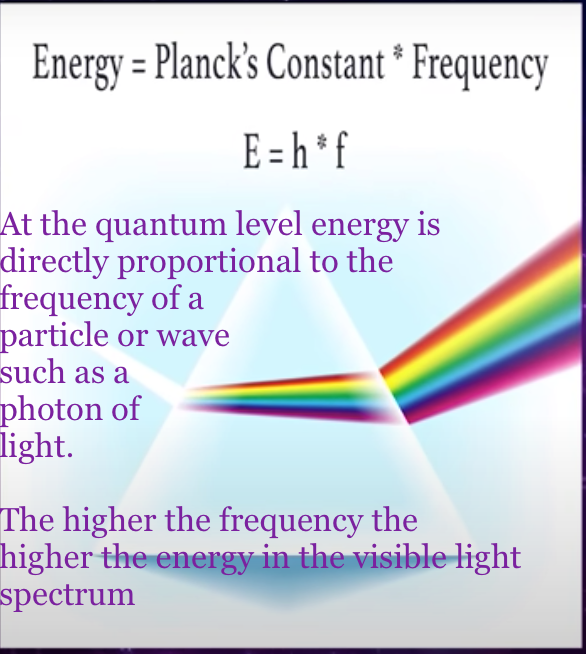
The higher the frequency the
higher the energy in the visible light
spectrum.
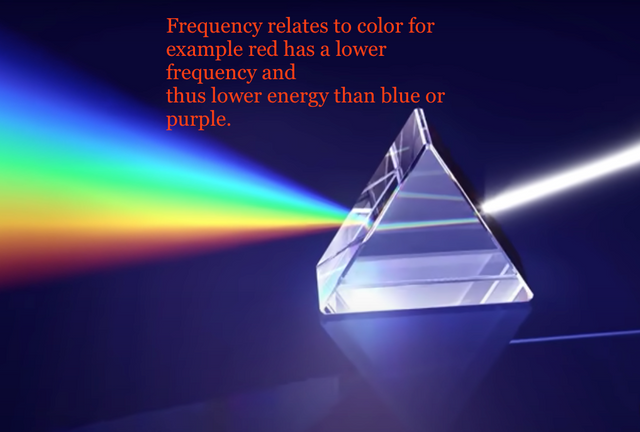
Frequency relates to color for
example red has a lower frequency and
thus lower energy than blue or purple.
Other qualities of light such as the
intensity or brightness do not affect
the energy level of a photon meaning
that yellow light emitted from a burning
candle has the same energy as yellow
light emitted from the Sun.
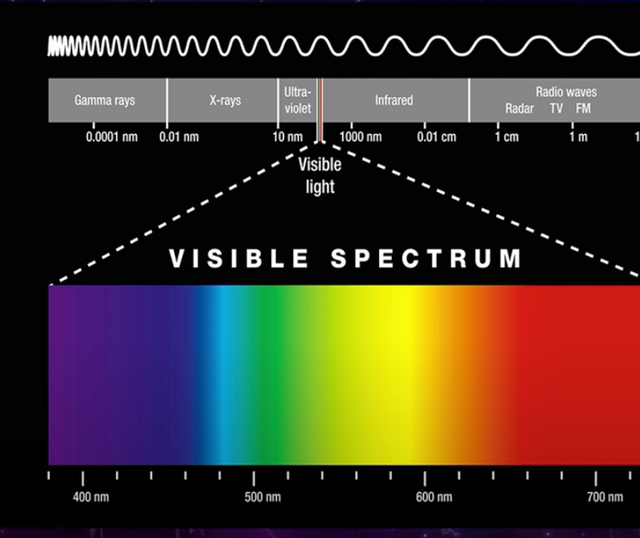
The other important physics principle
when it comes to energy is the law of
conservation of energy at famously
states energy cannot be created or
destroyed it can only be transformed.
Hermes said something similar many years ago.
He said the universe
is the work of eternity which has never
come into being and is ever coming into
being through eternity, for which reason
it will never be destroyed because
eternity is indestructible.
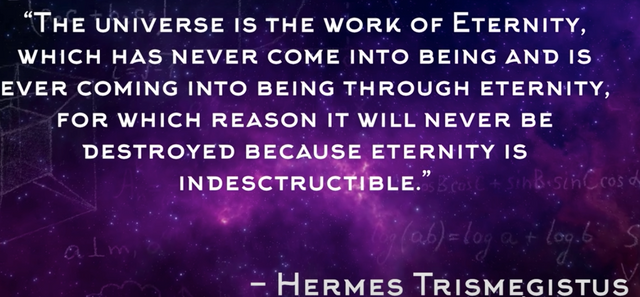
Light is electromagnetic energy.
We know there's a broad spectrum of
electromagnetic energy all of which can
be absorbed by our cells and atoms our
eyes are tuned to see the visible light
spectrum which is just a small sliver of
the full spectrum
humans can
hear sounds over a 10 octave range 10
times more than our visual capacity.
We
hear from as low as 16 to as high as
20,000 Hertz
First to Image the “Anatomy” of a Molecule
The image was too small to be resolved by visible light.
You could fit 350 of these molecules in one wavelength of blue light.
Now atoms are even smaller than these moldecules.
They you have protons, neutrons, electrons and quarks are even smaller!
How a scanning electron microscope works. . .
It operates on the weird quantum mechanical principle
that all particles can act like waves.
And the Faster the particle, the smaller the Wavelength,
which allows us to see down to smaller scales.
Scanning electron microscopes
have seen down to half a nanometer, which is still not
small enough to see an atom.
But in 2013, scientists imaged a single hydrogen atom
for the first time using photo ionization microscopy.
https://www.zurich.ibm.com/news/09/pentacene.html
Atom by Atom, Bond by Bond, a Chemical Reaction Caught in the Act
https://newscenter.lbl.gov/2013/05/30/atom-by-atom/
Smile, hydrogen atom, you're on quantum camera
https://www.newscientist.com/article/mg21829194-900-smile-hydrogen-atom-youre-on-quantum-camera/
AN ATOM’S electrons are an ever-shifting quantum melee, but it turns out you can still take their photograph as if they were standing still. A quantum-style microscope has imaged the hydrogen atom’s wave function, the equation that determines its electrons’ positions – and in turn the atom’s properties.
The electrons that dance around an atomic nucleus help determine how the atom bonds with others, but they are notoriously difficult to pin down. Thanks to quantum theory, which says that tiny particles are in multiple places simultaneously, you can never say where a given electron actually is. The best you can do is say how likely it is to be in a given spot.
Not all positions are equally available: electrons can only reside at certain distances from the nucleus, with these distances related to how much energy the electron holds. In principle, the wave function, denoted by Greek letter psi, can be used to reveal these energy levels for any given atom or molecule, although in practice this has only been done for the very simplest – the hydrogen atom and molecule (made of two hydrogen atoms bonded together).
But how on earth do you make an image of such an object? Measuring the position of a single electron “collapses” the wave function, forcing it to pick a particular position, but that alone is not representative of its normal, quantum presence in the atom. “Wave functions are difficult to measure. They’re exquisite quantum objects that change their appearance upon observation,” says Aneta Stodolna of the FOM Institute AMOLF in Amsterdam, the Netherlands.
Her team decided to make a picture using a technique dreamed up 30 years ago that can be thought of as a quantum microscope. Rather than taking an image of a single atom, they sampled a bunch of atoms. This removes the quantum nature of each individual atom’s electron, forcing it to choose a particular location from those it is allowed to reside in. Do it with enough atoms and the number choosing each spot will reflect the quantum probabilities laid out by the wave function.
Stodolna’s team made a beam of atomic hydrogen and zapped it with two separate lasers that excited the atoms’ electrons by precise amounts. An applied electric field then pushed the excited electrons away from their respective nuclei, towards a detector about half a metre away.
The electrons emitted waves that produced an interference pattern on the detector (see “An atom undressed”). Crucially, the pattern was a projection of the spacings of the energy levels in the hydrogen atom, as laid out in the wave function, with bright rings where electrons were present and dark lanes where they were not (Physical Review Letters, doi.org/mmz). “You can think about our experiment as a tool that allows you to look inside the atom and see what’s going on,” Stodolna says.
The result is reminiscent of an intriguing controversy: whether the wave function in the atom is a real physical wave or a very useful piece of mathematics. “When you see pictures like that you think, how can anyone not think psi is real?” says Terry Rudolph of Imperial College London, who is currently working to prove that it is. But he adds that further tests are needed to answer the question once and for all.
For a classical system made up of particles, you can completely specify the state of the system by giving the position and momentum (or equivalently velocity) of every particle in the system at any particular time. If you consider one particle whose position and momentum is known at this initial time, then if you know all the forces acting on that particle you can write down equations which tell you exactly what its position and momentum will be at any future time. Note that instead of specifying the forces you can specify the potential energy function, which is equivalent: force is the gradient of potential.
In quantum mechanics the situation is a little more complicated. The systems that you study are still made of particles, and the basic procedure is in some ways similar: You measure the state of a particle at some initial time, you specify the forces acting on that particle (or equivalently, the potential energy function describing those forces), and quantum mechanics gives you a set of equations for predicting the results of measurements taken at any later time. There are two key differences between these two theories, however. First of all, the state of a particle in quantum mechanics is not just given by its position and momentum but by something called a "wave function." Secondly, knowing the state of a particle (ie its wavefunction) does not enable you to predict the results of measurements with certainty, but rather gives you a set of probabilities for the possible outcomes of any measurement.
The wave function which describes the state of a particle is often denoted by the letter Y (spelled "psi" and pronounced "sigh"). It is a complex function which is defined everywhere in space.
No matter what state your particle is in, its wavefunction has some complex value at every point in the universe.
http://www.felderbooks.com/papers/psi.html
In 2013 their imaging was the electron's wave function or the probability of finding it in different parts.
Even though that is as far as it can go with imaging. . .smashing with particle colliders has been going on for years. ..since at Least the 1960's.
In 1968 this was how they discovered what makes up protons and neutrons.
This is how quarks were discovered.
Quarks are Never Alone.
00:00
00:01
Have you ever looked through a microscope?
00:04
It's a very different world from ours.
00:06
But this is what makes up our world.
00:07
Those are cells in your lungs.
00:10
Well, that makes you wonder what makes of this world?
00:12
What would it look like if you zoomed in
00:14
even farther to the individual molecules
00:16
that make up these cells?
00:18
We didn't know until 2009, when a single molecule was imaged
00:22
for the first time at atomic resolution,
00:24
and it looks like this.
00:26
Those lines, those are bonds you're seeing,
00:28
bonds between the atoms.
00:30
Obviously, bonds don't look like green smears
00:32
anymore than these meerkats look like this in visible light.
00:36
But that's the thing.
00:37
This image was not made with visible light.
00:39
In fact, this molecule is invisible.
00:41
It's too small to be resolved with visible light.
00:44
All light waves have a wavelength, right.
00:46
And at the microscopic level, that light,
00:48
like this blue light here, reflects off
00:50
of things that are about the same size as that wavelength,
00:52
like this cholera.
00:54
So that's the issue here.
00:55
Despite how small visible light is,
00:57
you could fit 350 of these molecules
01:00
in one wavelength of blue light.
01:02
And we know that atoms are even smaller than these molecules.
01:05
And atoms have electrons and protons and neutrons.
01:08
And protons have quarks.
01:09
How far down can we keep going?
01:12
Let's zoom back out for a second.
01:13
We couldn't image this molecule with visible light.
01:16
But to be honest, we couldn't even resolve these cells
01:18
with visible light.
01:19
Instead, this image was made with electrons.
01:22
It works like this.
01:24
Imagine I'm trying to figure out what this frog looks like.
01:26
I can throw small things at it, and they'll bounce off
01:28
in different directions.
01:29
And some pass by, and you get the outline of a frog.
01:32
That's how a scanning electron microscope works.
01:35
It images things like this pollen.
01:37
It operates on the weird quantum mechanical principle
01:39
that all particles can act like waves.
01:42
And the faster the particle, the smaller the wavelength,
01:45
which allows us to see down to smaller scales.
01:47
If I tried to image this with visible light
01:49
that has a much bigger wavelength,
01:51
it just wouldn't work.
01:53
Answering the original question, scanning electron microscopes
01:56
have seen down to half a nanometer, which is still not
01:59
small enough to see an atom.
02:01
But in 2013, scientists imaged a single hydrogen atom
02:04
for the first time using photo ionization microscopy.
02:07
Well, sort of.
02:08
What you're seeing here is the electrons' wave
02:10
function or the probability of finding it in different parts.
02:14
It's kind of like making a picture like this.
02:16
This atomic portrait is the smallest picture
02:18
we've ever taken at the limit of what we've been
02:21
able to see with microscopes.
02:23
So that's as far as we can go?
02:25
With imaging, yes.
02:26
But we can always smash stuff.
02:28
Particle colliders are one of the more unusual ways
02:30
that scientists probe small scales, smashing particles
02:33
together since the 1960s.
02:36
Particle colliders use that same quantum mechanical principle,
02:39
that fast-moving particles have smaller wavelengths.
02:41
And of course, particles smashing together
02:43
are generally going pretty fast.
02:45
So these particle colliders, weird as they are in concept,
02:48
work extremely well.
02:49
For one, in 1968, we discovered what
02:52
makes up protons and neutrons.
02:54
We discovered quarks.
And we discovered that quarks are never alone.
When you try to separate two of them,
you have to put in so much energy
that by the mass energy equivalence,
you'd create two new quarks that bind to the original two.
The Large Hadron Collider in Geneva Switzerland takes takes tiny particles, like protons,
and smashes them together so hard that they explode.
We can then measure the pieces and recreate where they came from
to figure out more about the structure of these particles.
This method of smashing particles
together is so effective that, in 2013, we
discovered a new particle, one that had only been theorized
previously, the Higgs Boson.
It led to the confirmation of many aspects of particle theory.
What is a quark made of?
as far as we can tell, they have no size.
That is, they have no structure.
We've peered down into a quark as far as 10
to the minus 19 meters, and we've
seen nothing, no indication of smaller components.
The same is true of electrons and neutrinos.
These are all elementary particles.
Does this create issues of infinite forces
as you get closer and closer to the particles.
String theory has proposed a solution to these infinities
that the particles are made of one
dimensional loops or strings.
That way, some parts of the string are closer
and some are further away as you approach the particle,
your problem of infinities disappears.
How small are these theoretical strings?
Around the size of the Planck length,
which is, in theory, the shortest measurable length
in the universe.
It is 10 to the minus 35 meters.
That's 100 quintillion times smaller than a proton.
The story goes that after Ernest Lawrence came up for the design for the first cyclotron, he raced from the Berkeley library shouting, “I’m going to be famous!” His prediction was spot on: the cyclotron was the first particle accelerator, the first machine that could study matter on its smallest scales. Since it was became the model for all subsequent accelerators, its invention established Lawrence’s place as one of the most important and influential physicists of the 20th century.
The Superconducting Super Collider is rarely discussed anymore, but its ghost has haunted high energy physics for the last 16 years. Slated to begin operations in 1999 in Waxahachie, Texas, the SSC would have been nearly three times as powerful as the Large Hadron Collider at CERN. Had it been completed, we would probably not be waiting with bated breath for the hints of the Higgs Boson from the LHC:
after ten years of planning and $2 billion in construction costs, Congress pulled the plug on the project in 1993. Today, several of the buildings and 14 miles of the planned 54-mile-long tunnel sit abandoned in the Texas desert — the tunnel intentionally filled with water in order to preserve it.
https://summerofscience.wordpress.com/tag/large-hadron-collider/
Fermilab is America's particle physics and accelerator laboratory
We bring the world together to solve the mysteries of matter, energy, space and time.
Particle Physics area
https://www.fnal.gov/pub/science/particle-physics/index.html
Leading Accelerator Technology
As America's particle physics laboratory, Fermilab operates and builds powerful particle accelerators for investigating the smallest things human beings have ever observed. About 2,300 physicists from all over the world come to Fermilab to conduct experiments using particle accelerators.
https://fnal.gov/pub/science/particle-accelerators/index.html
The Fermilab Accelerator Science and Technology Facility, known as FAST, is a test bed for cutting-edge particle beam and accelerator research based on superconducting technology. FAST will be unique in the United States as a particle beam research facility based on superconducting radio-frequency technology, on which nearly all proposed future accelerators in the world are based.
https://fnal.gov/pub/science/particle-accelerators/fast.html
The Hadronic Physics Group (HPG) conducts medium to high energy nuclear physics experiments in diverse research facilities in the world, including the Brookhaven National Laboratory (BNL), the DESY Laboratory, Thomas Jefferson National Accelerator Facility (TJNAF), The Johannes Gutenberg University of Mainz, Los Alamos National Laboratory (LANL), and the Oak Ridge National Laboratory (ORNL).
The main topic of the group is to probe the structure of protons, neutrons, and other hadrons in order to address a variety of questions, examples of which regard perturbative and/or non-perturbative QCD, the Standard Model of electroweak interaction and models of the early universe.
https://web.mit.edu/lns/research/hpg.html
Near Geneva, Switzerland, an experimental facility, 17-miles in diameter, shoots protons at almost the speed of light to see what happens when they crash into one another. The Large Hadron Collider (LHC) is located at CERN, the European Organization for Nuclear Research, and is the largest and most powerful particle accelerator on the planet.
Several experiments take data at the LHC, including the largest called ATLAS. And, on the other side of the world, in The University of New Mexico’s Department of Physics and Astronomy, a research group is making big contributions to this massive experiment more than 5,000 miles away.
Dr. Sally Seidel, a professor of physics, has been working in this international collaboration for more than two decades. Over the years, she and her research group, which includes graduate and undergraduate students along with UNM Research Electrical Engineer Martin Hoeferkamp and postdoctoral fellow Konstantin Toms, have designed and developed parts of the ATLAS detector.
Pixel Detector Vert
The ATLAS Pixel Detector
“Our UNM group develops new technologies to detect particles. Those technologies form the basis of novel detectors that we then install in ATLAS and use for collecting data,” explained Seidel. “Our group also analyzes data we participate in collecting at CERN, and we develop new physics algorithms, new ways of investigating the processes that are recorded in the detector.”
http://news.unm.edu/news/unm-technology-playing-crucial-role-in-large-hadron-collider-discoveries
https://www.manhattanprojectvoices.org/locations/oak-ridge-tn
https://summerofscience.wordpress.com/tag/large-hadron-collider/
LHC experiments present new Higgs results at 2019 EPS-HEP conference
https://home.cern/news/press-release/physics/lhc-experiments-present-new-higgs-results-2019-eps-hep-conference
Very interesting!
Reported in 2018
Today, 9 March, marks the end of CERN’s annual winter shut down. The Laboratory’s massive accelerator complex will soon begin to lumber out of its winter hibernation and resume accelerating and colliding particles.
But while the Large Hadron Collider (LHC) has not been filled with protons since the Year-End Technical Stop (YETS) began on 4 December 2017, its tunnels and experimental caverns have been packed with people performing maintenance and repairs as well as testing components for future accelerators.
https://home.cern/news/news/engineering/accelerator-hibernation-ends
https://cms.cern/news/long-shutdown-2-pixel-detector-extraction
CERN: Portals in the Sky and Other High Strangeness
In June of 2016, a series of incredible photos of the skies above CERN appeared online, courtesy photographer Christophe Suarez.
Coincidentally, or perhaps not, the images were captured only 10 days after the AWAKE experiment, or Advanced WAKEfield Experiment, began at its facility at CERN on June 16, 2016. #ThereAreNoCoincidences
In 2015, Yahoo News reported on footage of an alleged vortex forming over Geneva, what they referred to as a “UFO gateway.” In the footage, clouds swirl into a point, as if it were a black hole, and a number of small bright orbs can be seen “entering it.” The vortex then vanishes. The UFO portal had allegedly erupted directly over the Large Hadron Collider. Unfortunately, despite media coverage, this footage turned out to be CGI.
In August 2016, a video appeared online that seemed to depict a ritual sacrifice on the CERN grounds, right in front of the statue of Shiva, the Hindu deity. In the video, you can see a number of cloaked figures gathered near the statue, surrounding a woman.
The video is taken from the point-of-view of an unsuspecting onlooker, who decides to run for it after realizing what’s about to go down.
Shiva is known as "The Destroyer" within the Trimurti, the Hindu trinity that includes Brahma and Vishnu.
As Metro reported in January 2017, some bloggers online believe that CERN’s experiments are in fact an attempt to build “the kingdom of the antichrist,” who will eventually step through the portal and “rule our planet.”
The site says, ‘Antimatter is the opposite of matter, it isn’t physical, it’s spiritual, and it’s all around us. It’s also quite elusive and chaotic.”
Is this the Aether Tesla and others were studying?
Clyde Lewis wrote on the Ground Zero website , ‘Is it just a coincidence that CERN is short for the horned God Cernunnos? Is it also a coincidence that CERN has to go deep underground to do their “god” harnessing experiments? Cernunnos was the god of the underworld.’
https://www.strangerdimensions.com/featured/cern-portals-in-the-sky-and-other-high-strangeness/
Connecting Information
How thought creates Vibration and Frequency | Masters of Matter
The Development of Modern Atomic Theory
https://www.nobelprize.org/prizes/physics/1918/planck/biographical/
https://www.famousscientists.org/max-planck/
https://www.physicsoftheuniverse.com/scientists_planck.html
https://study.com/academy/lesson/max-planck-atomic-theory-discovery-of-light.html
https://steemit.com/greatawakening/@artistiquejewels/expand-your-thinking
http://www.felderbooks.com/papers/quantum.html
https://www.manhattanprojectvoices.org/tags/large-hadron-collider
https://physics.unm.edu/pandaweb/undergraduate/programs/honorsThesis/2018_Rajen.pdf
http://news.unm.edu/news/unm-technology-playing-crucial-role-in-large-hadron-collider-discoveries
UPDATE and be sure to check replies!
4.1.2024
https://steemit.com/eclipse2024/@artistiquejewels/2024-extraordinary-eclipse-where-it-s-going-and-where-it-s-been-10-interesting-facts
Downvoting a post can decrease pending rewards and make it less visible. Common reasons:
Submit
Connecting Articles from my Steemit,
https://steemit.com/freeenergy/@artistiquejewels/quartz-crystal-considered-eternal-ice-sent-by-the-heavenly-gods-fire-and-ice-the-piezoelectric-effect-and-the-energy-of-crystals
Thoughts direct energy and energy follows thought!
Downvoting a post can decrease pending rewards and make it less visible. Common reasons:
Submit